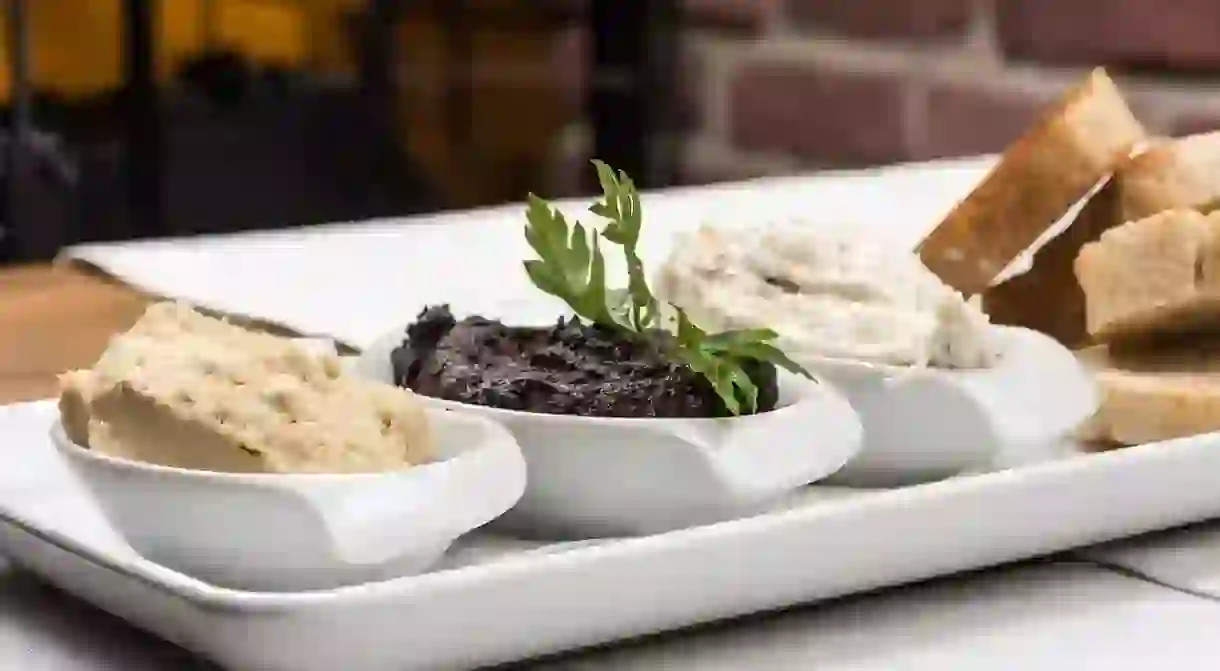What Are Tapenades and Why Are the French Crazy About Them?

The Southern French love to spread tapenades on everything, from bread to vegetables, but the term is often misused. It isn’t actually French in origin and the word comes from a different component than its base ingredient.
In the general sense, a tapenade is a sauce or mix spread over bread or pizza, made as an hors d’œuvre appetizer to be enjoyed with an apéritif drink or cocktail.
There’s some confusion over what constitutes a traditional tapenade
Technically speaking, a pesto sauce is herb-based (usually basil), a tapenade is olive-based, and most other things are considered a spread or a confit. In recent years, many chefs have played fast and loose with the term though, and created many different sorts of tapenades, made from fish, fruit and meat.

They are traditionally olive-based though named after capers
Just to be more confusing, the word ‘tapenade’ comes from the Provençal word for capers (‘tapenos’). Capers are salty, pea-looking buds that come from a shrub found in Mediterranean climates. They have to be harvested by hand before they flower (so are very labour-intensive) and are traditionally used in most tapenades, with olives as the base component. So what everyone thinks of as an olive dish is actually a caper one. In ancient times, after they’d been picked, capers were apparently kept in olive oil amphorae and came out mushy with the taste of olives – and so the Provençal tapenade was born.

They are loved in Southern France but originally come from Italy
While the word and the tradition come from Provence, the first written recording of eating tapenade was made by Italians in the first century AD, and Cato the Elder included a tapenade recipe in his book On Agriculture. Certainly the Romans ate a lot of olive-based dishes and it’s still prevalent in a lot of Italian cooking.

How to make the perfect tapenade
Unsurprisingly, considering its history and name, there are lots of variations on how to make the perfect tapenade. Many people add anchovies for even more salt, but the essentials are olives, capers, olive oil (to squeeze into the paste) and lemon juice. People sometimes add brandy and herbs. If making it seems like too much effort, you’ll find the most sought-after tapenades around all the major markets in Provence – the Marché Forville in Cannes, the Flower Market in Nice, and the daily market in Place Richelme in Aix-en-Provence. They’re a perfect accompaniment to fresh bread and the local rosé wine, which is said to bring out the flavours.














